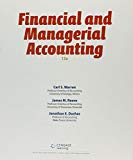
(a)
Profit margin: This ratio gauges the operating profitability by quantifying the amount of income earned from business operations from the sales generated.
Formula of profit margin:
Investment turnover: This ratio gauges the operating efficiency by quantifying the amount of sales generated from the assets invested.
Formula of investment turnover:
Formula of ROI according to Dupont formula:
To determine: Return on investment of MN Segment, PR Segment, SE Segment, and CP Segment, using Dupont formula.
(a)
Explanation of Solution
Determine ROI of MN Segment, if income from operations is $6,818,000,000, sales are $20,356,000,000, and assets invested are $28,627,000,000.
Determine ROI of PR Segment, if income from operations is $2,220,000,000, sales are $14,087,000,000, and assets invested are $22,056,000,000.
Determine ROI of SE Segment, if income from operations is $661,000,000, sales are $5,979,000,000, and assets invested are $14,750,000,000.
Determine ROI of CP Segment, if income from operations is $1,112,000,000, sales are $3,811,000,000, and assets invested are $7,506,000,000.
(b)
To explain: The differences in profit margin, investment turnover, and return on investment of MN Segment, PR Segment, SE Segment, and CP Segment.
(b)
Explanation of Solution
The following are the differences in profit margin, investment turnover, and return on investment of MN Segment, PR Segment, SE Segment, and CP Segment:
- Profit margin and investment turnover of MN Segment are high comparably, with 33.5%, and 0.71 and producing high ROI of 23.8%.
- Investment turnover of SE Segment is very low comparably and produces low ROI of 4.6%.
- CP Segment stands in the second place with 29.2% profit margin and produces ROI of 14.9%.
- PR Segment stands in the third place with 0.64 investment turnover and produces ROI of 10.1%.
Want to see more full solutions like this?
Chapter 23 Solutions
Bundle: Financial & Managerial Accounting, Loose-leaf Version, 13th + CengageNOWv2, 1 term (6 months) Printed Access Card Corporate Financial ... Access Card for Managerial Accounting, 13th
 Managerial AccountingAccountingISBN:9781337912020Author:Carl Warren, Ph.d. Cma William B. TaylerPublisher:South-Western College Pub
Managerial AccountingAccountingISBN:9781337912020Author:Carl Warren, Ph.d. Cma William B. TaylerPublisher:South-Western College Pub Financial And Managerial AccountingAccountingISBN:9781337902663Author:WARREN, Carl S.Publisher:Cengage Learning,
Financial And Managerial AccountingAccountingISBN:9781337902663Author:WARREN, Carl S.Publisher:Cengage Learning, Financial Reporting, Financial Statement Analysis...FinanceISBN:9781285190907Author:James M. Wahlen, Stephen P. Baginski, Mark BradshawPublisher:Cengage Learning
Financial Reporting, Financial Statement Analysis...FinanceISBN:9781285190907Author:James M. Wahlen, Stephen P. Baginski, Mark BradshawPublisher:Cengage Learning- Principles of Accounting Volume 2AccountingISBN:9781947172609Author:OpenStaxPublisher:OpenStax College
 Accounting Information SystemsAccountingISBN:9781337619202Author:Hall, James A.Publisher:Cengage Learning,
Accounting Information SystemsAccountingISBN:9781337619202Author:Hall, James A.Publisher:Cengage Learning, Essentials of Business Analytics (MindTap Course ...StatisticsISBN:9781305627734Author:Jeffrey D. Camm, James J. Cochran, Michael J. Fry, Jeffrey W. Ohlmann, David R. AndersonPublisher:Cengage Learning
Essentials of Business Analytics (MindTap Course ...StatisticsISBN:9781305627734Author:Jeffrey D. Camm, James J. Cochran, Michael J. Fry, Jeffrey W. Ohlmann, David R. AndersonPublisher:Cengage Learning





